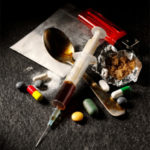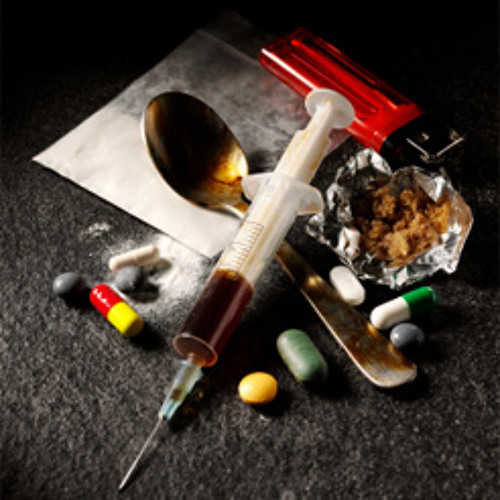Published on October 28th, 2014 By By Stuart Gitlow, MD Drug use is not isolated to dark alleys or urban street corners, nor is addictive illness relegated to one segment of the population. Addiction crosses every geographic and socio-economic boundary across the country. Addicts can be the older American with chronic pain, the wounded veteran returning home, the teenager who finds leftover pain pills in the medicine cabinet, or the weekend warrior athlete seated in the office cubicle next to yours. Addiction, after all, is a chronic, often relapsing brain disease—not a sign of flawed character, personal weakness, or low morality. Prescription drug abuse, the U.S. Centers for Disease Control and Prevention has said, is “a growing, deadly epidemic.” More than 6 million Americans addictively use prescription drugs, such as painkillers, each year. In 2011, nearly 23,000 people died from prescription drug overdoses alone, according to the CDC, and more than 1.4 million visits to the emergency room were related to misuse and abuse of prescription medications. It’s time for a fresh approach that puts more emphasis on diagnosis, treatment, and prevention. And yet we approach the fight against addictive illness with one hand tied behind our backs. The human toll—families broken, careers destroyed, lives lost—is huge. And so is the financial burden. Abuse of prescription drugs, according to the Trust for America’s Health, a Washington, D.C.-based nonpartisan group, costs the country a whopping $53 billion a year in lower productivity and medical and criminal-justice costs. As they look for more effective ways to fund the fight against drug abuse, policymakers should consider the more sophisticated and definitive drug-testing technology that is now available to help identify and potentially prevent problems before they get worse. We know testing saves lives. That’s why your doctor checks your blood pressure and blood glucose levels during a physical exam. Such tests can help determine if you have hypertension or diabetes. Such basic and inexpensive tests are available, though not commonly used for addictive illnesses, despite the prevalence of these illnesses. Take the case of a clinician concerned about a patient misusing prescription drugs or taking a painkiller different from the one his or her doctor prescribed. Definitive testing can help doctors answer these questions and better treat the patient. Equally important is testing young adults for addictive disease, just as we test for diabetes and hypertension. Addiction caught early has a far better chance of being treated without complications. The most recent annual National Drug Control Strategy from the White House asserts we must avoid what it calls a “false choice” between a strategy of eradicating drug abuse by enforcement or legalizing it. The strategy declares: “Science has shown that drug addiction is not a moral failing but rather a disease of the brain that can be prevented and treated.” The revised strategy promotes “a balance of evidence-based public health and safety initiatives focusing on key areas such as substance abuse prevention, treatment, and recovery.” While no single test can prove the presence of addiction, it is often impossible to detect addictive illness in its early stages without any test at all. And yet on the front lines, clinicians often overlook a reliable technology they can use to help them know what drugs their patients are using in the first place. Patients are not offered testing for addictive illnesses because these tests are not well understood. There is a knowledge gap among physicians about how these tests can provide critical clinical information. And economic issues also play a role. To beat this epidemic, we must begin by doing a far better job of identifying those who are afflicted. To do that, we have to pay fairly for diagnostic workups, treatment, and indeed for innovation in diagnostics and treatment. Ongoing screening of those at risk as well as regular monitoring of identified patients is as important as checking blood sugar or regularly monitoring for hypertension in patients at risk. Rather than viewing testing as something done to punish “bad” patients, it should be seen as an important clinical tool to manage and improve treatment, giving clinicians confidence in their prescribing decisions and helping to keep patients safe. Clinicians should be able to access the latest clinical tools and technology on behalf of the child, the veteran, or the weekend warrior who unwittingly—due to an undetected genetic predisposition to addiction—became hooked on opioids while on the mend from knee surgery. In health matters this grave, it is literally a matter of life and death.
Drug use is not isolated to dark alleys or urban street corners, nor is addictive illness relegated to one segment of the population. Addiction crosses every geographic and socio-economic boundary across the country. Addicts can be the older American with chronic pain, the wounded veteran returning home, the teenager who finds leftover pain pills in the medicine cabinet, or the weekend warrior athlete seated in the office cubicle next to yours. Addiction, after all, is a chronic, often relapsing brain disease—not a sign of flawed character, personal weakness, or low morality. Prescription drug abuse, the U.S. Centers for Disease Control and Prevention has said, is “a growing, deadly epidemic.” More than 6 million Americans addictively use prescription drugs, such as painkillers, each year. In 2011, nearly 23,000 people died from prescription drug overdoses alone, according to the CDC, and more than 1.4 million visits to the emergency room were related to misuse and abuse of prescription medications. It’s time for a fresh approach that puts more emphasis on diagnosis, treatment, and prevention. And yet we approach the fight against addictive illness with one hand tied behind our backs. The human toll—families broken, careers destroyed, lives lost—is huge. And so is the financial burden. Abuse of prescription drugs, according to the Trust for America’s Health, a Washington, D.C.-based nonpartisan group, costs the country a whopping $53 billion a year in lower productivity and medical and criminal-justice costs. As they look for more effective ways to fund the fight against drug abuse, policymakers should consider the more sophisticated and definitive drug-testing technology that is now available to help identify and potentially prevent problems before they get worse. We know testing saves lives. That’s why your doctor checks your blood pressure and blood glucose levels during a physical exam. Such tests can help determine if you have hypertension or diabetes. Such basic and inexpensive tests are available, though not commonly used for addictive illnesses, despite the prevalence of these illnesses. Take the case of a clinician concerned about a patient misusing prescription drugs or taking a painkiller different from the one his or her doctor prescribed. Definitive testing can help doctors answer these questions and better treat the patient. Equally important is testing young adults for addictive disease, just as we test for diabetes and hypertension. Addiction caught early has a far better chance of being treated without complications. The most recent annual National Drug Control Strategy from the White House asserts we must avoid what it calls a “false choice” between a strategy of eradicating drug abuse by enforcement or legalizing it. The strategy declares: “Science has shown that drug addiction is not a moral failing but rather a disease of the brain that can be prevented and treated.” The revised strategy promotes “a balance of evidence-based public health and safety initiatives focusing on key areas such as substance abuse prevention, treatment, and recovery.” While no single test can prove the presence of addiction, it is often impossible to detect addictive illness in its early stages without any test at all. And yet on the front lines, clinicians often overlook a reliable technology they can use to help them know what drugs their patients are using in the first place. Patients are not offered testing for addictive illnesses because these tests are not well understood. There is a knowledge gap among physicians about how these tests can provide critical clinical information. And economic issues also play a role. To beat this epidemic, we must begin by doing a far better job of identifying those who are afflicted. To do that, we have to pay fairly for diagnostic workups, treatment, and indeed for innovation in diagnostics and treatment. Ongoing screening of those at risk as well as regular monitoring of identified patients is as important as checking blood sugar or regularly monitoring for hypertension in patients at risk. Rather than viewing testing as something done to punish “bad” patients, it should be seen as an important clinical tool to manage and improve treatment, giving clinicians confidence in their prescribing decisions and helping to keep patients safe. Clinicians should be able to access the latest clinical tools and technology on behalf of the child, the veteran, or the weekend warrior who unwittingly—due to an undetected genetic predisposition to addiction—became hooked on opioids while on the mend from knee surgery. In health matters this grave, it is literally a matter of life and death.
More tools needed in fight against drug addiction




